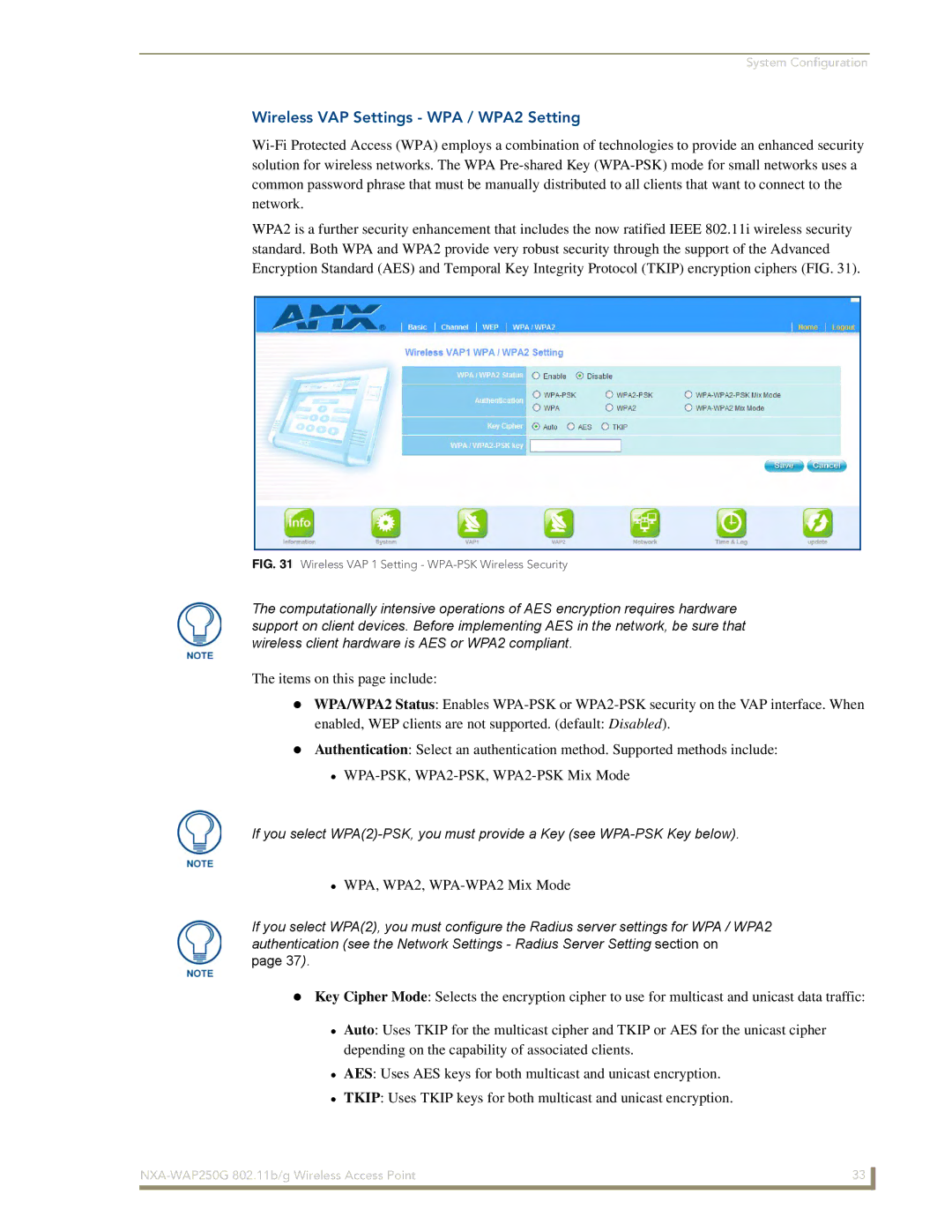
System Configuration
Wireless VAP Settings - WPA / WPA2 Setting
WPA2 is a further security enhancement that includes the now ratified IEEE 802.11i wireless security standard. Both WPA and WPA2 provide very robust security through the support of the Advanced Encryption Standard (AES) and Temporal Key Integrity Protocol (TKIP) encryption ciphers (FIG. 31).
FIG. 31 Wireless VAP 1 Setting - WPA-PSK Wireless Security
The computationally intensive operations of AES encryption requires hardware support on client devices. Before implementing AES in the network, be sure that wireless client hardware is AES or WPA2 compliant.
The items on this page include:
WPA/WPA2 Status: Enables
enabled, WEP clients are not supported. (default: Disabled).
Authentication: Select an authentication method. Supported methods include:
If you select
WPA, WPA2, WPA-WPA2 Mix Mode
If you select WPA(2), you must configure the Radius server settings for WPA / WPA2 authentication (see the Network Settings - Radius Server Setting section on
page 37).
Key Cipher Mode: Selects the encryption cipher to use for multicast and unicast data traffic:
Auto: Uses TKIP for the multicast cipher and TKIP or AES for the unicast cipher depending on the capability of associated clients.
AES: Uses AES keys for both multicast and unicast encryption.
TKIP: Uses TKIP keys for both multicast and unicast encryption.
33 | |
|
|
